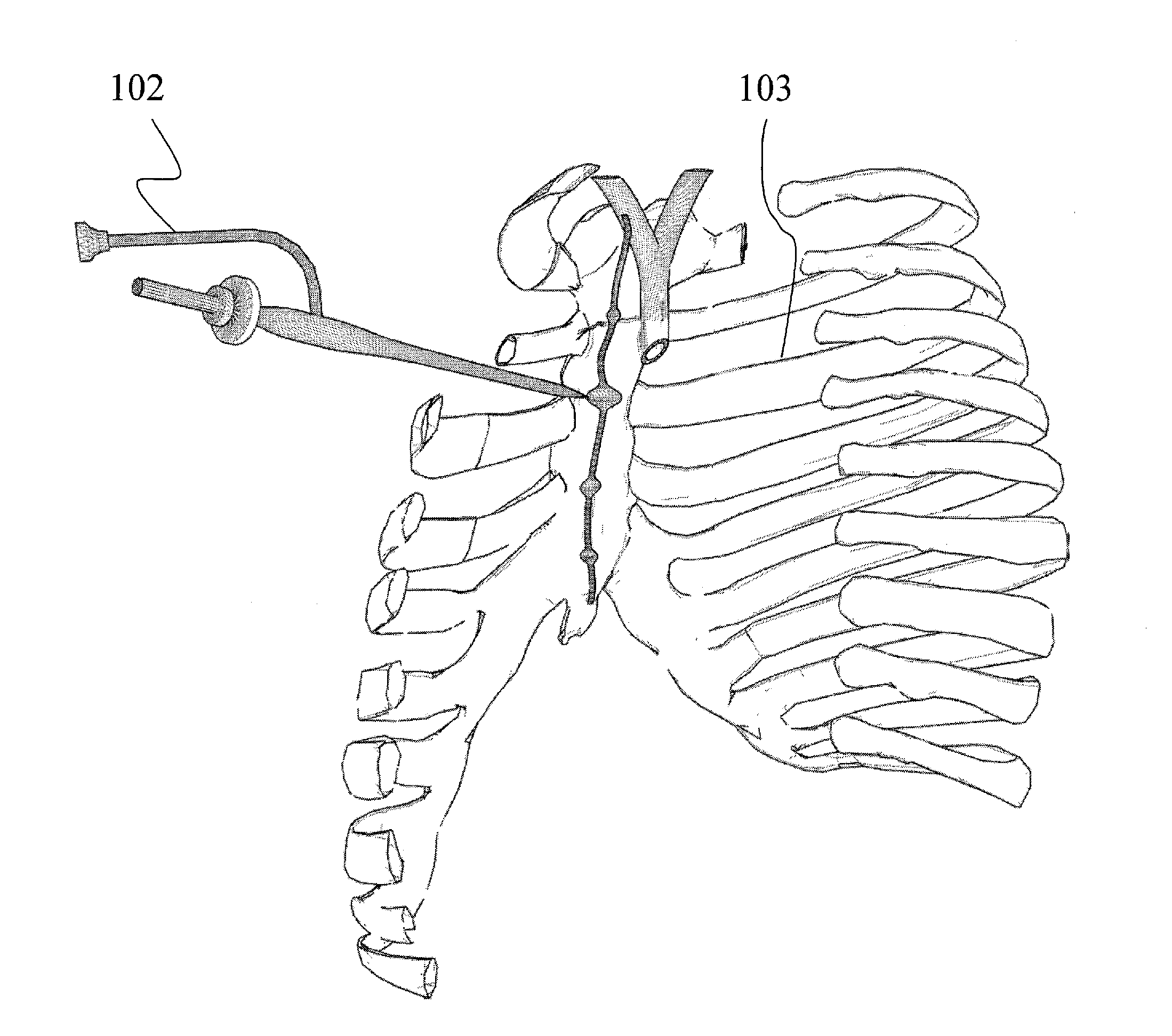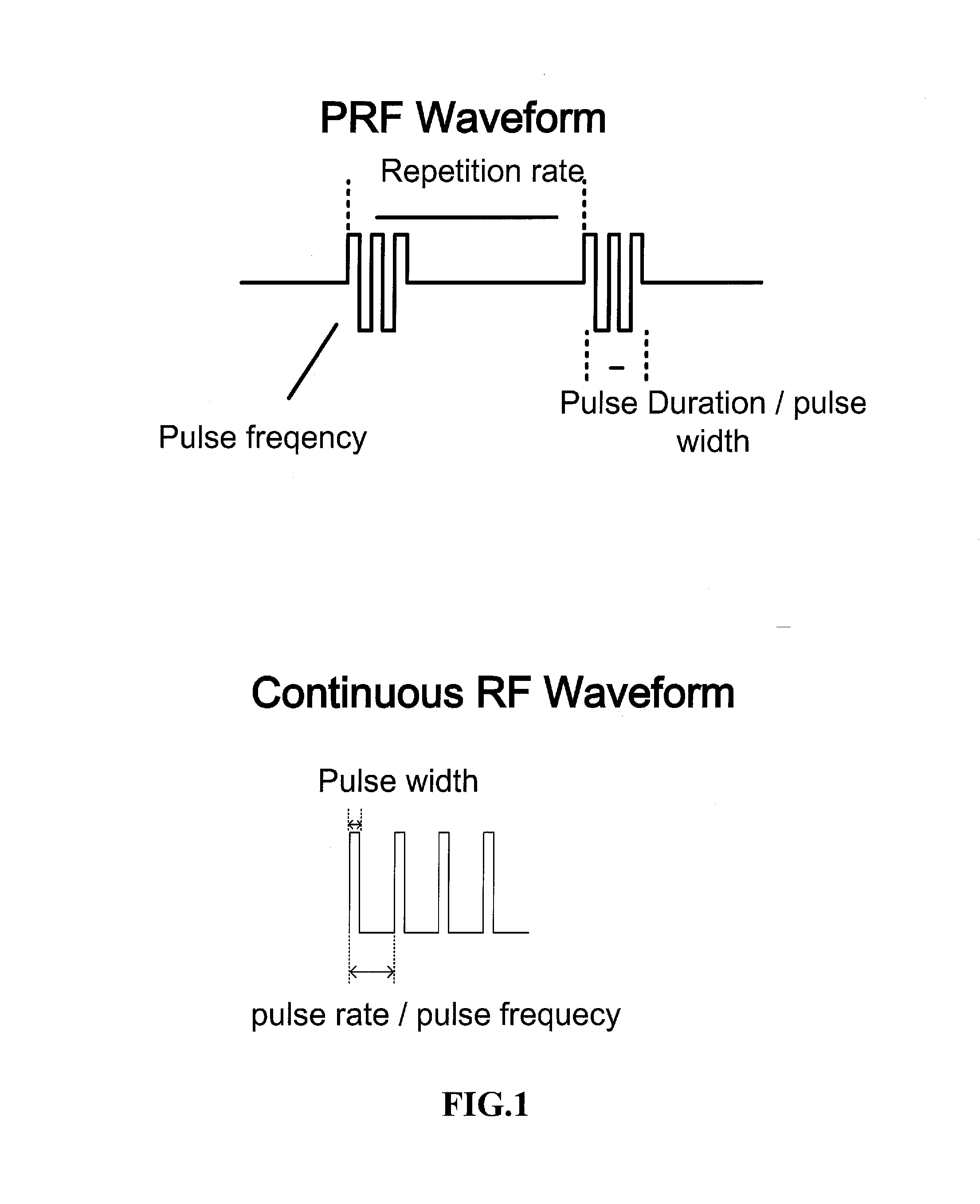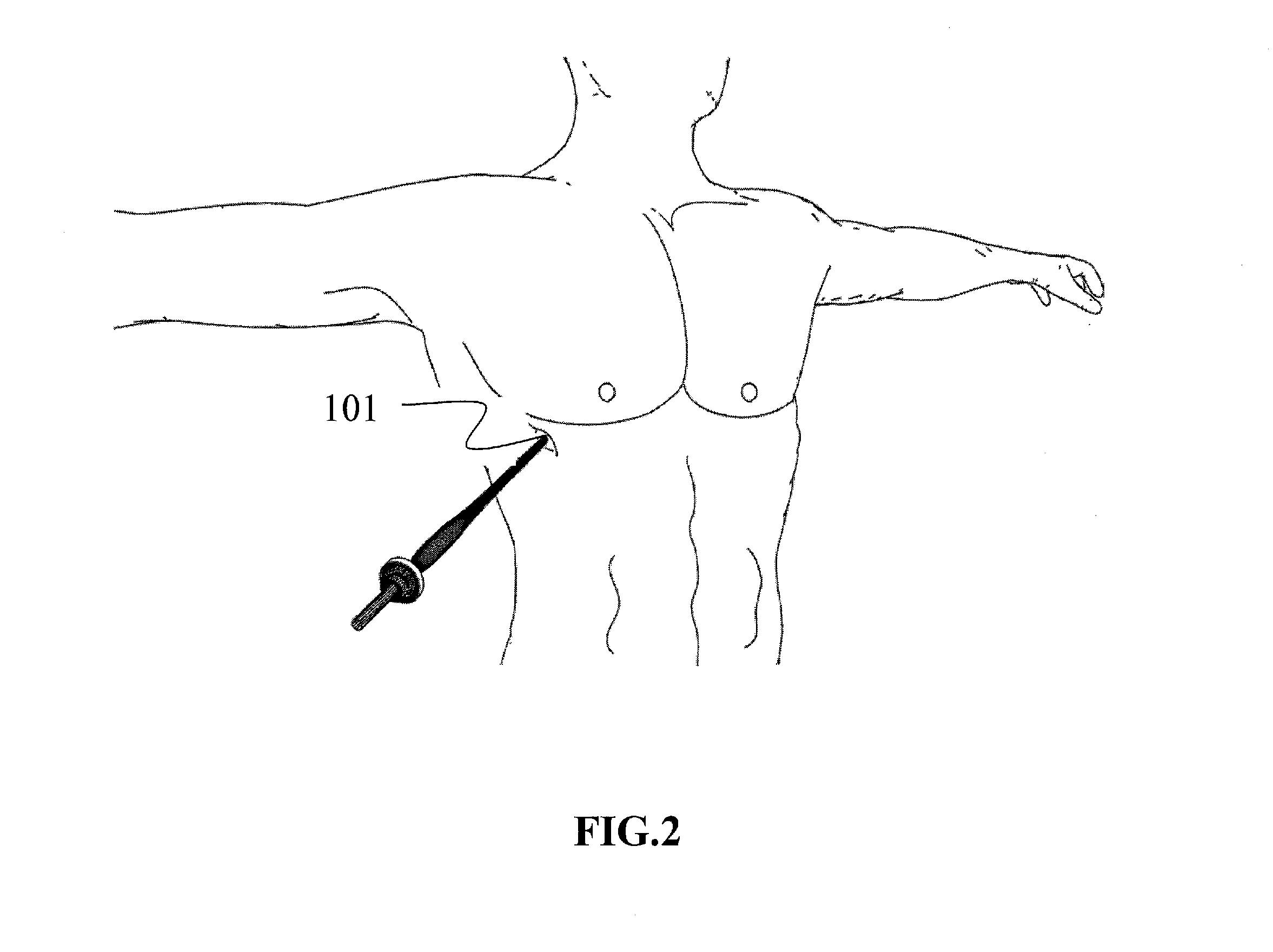Sympathetic ganglion stimulation method for treatment of hyperhidrosis, Raynauds phenomenon, cerebral ischemia, asthma and hypertension
- Summary
- Abstract
- Description
- Claims
- Application Information
AI Technical Summary
Benefits of technology
Problems solved by technology
Method used
Image
Examples
example 1
[0059]PRF stimulation may be applied to treat hyperhidrosis. Patients who are suffering from palmar hyperhidrosis or other forms of hyperhidrosis are found to have abnormal sympathetic activities with the T2 and T3 ganglia.
[0060]To treat palmar or axillary hyperhidrosis, the wireless, battery-less and lead-less stimulator is implanted over the inferior stellate ganglion and over upper thoracic ganglia. Preferably, the stimulator is positioned over the T2 and T3 ganglia. A rapid PRF that exceeds the natural cycling rate of the nerve polarization and depolarization (overpacing) is applied to the T2 and T3 ganglia until the nerve and its neurotransmitters are fatigued so that no signals can be further conducted. The PRF should be operated at a frequency of 500 KHz, current amplitude at 5 volts, repetition rate at 2 Hz, and pulse width duration at 50 ms. PSP and PST of the patient are monitored before, during and after PRF stimulation until the symptom of the palmar hyperhidrosis is all...
example 2
[0061]Raynaud's phenomenon is a vasospastic disorder triggering discoloration of the fingers, toes and occasionally other areas. The disorder is caused by increased activation of sympathetic noradrenergic nerves controlling muscle tone of digit arteriolar walls.
[0062]Treatment of Raynaud's phenomenon is akin to the procedures conducted with patients suffering from palmar hyperhidrosis. PRF stimulation in the form of overpacing is applied to the T2 and T3 ganglia until symptom is improved. Preferably, the PRF should be operated at a frequency of 500 KHz, current amplitude at 5 volts, repetition rate at 2 Hz, and pulse width duration at 50 ms. Temperatures of the fingers are monitored before, during and after the PRF stimulation.
example 3
[0063]The cerebral blood vessels, particularly the pial vessels, have an abundance of non-adrenergic sympathetic nerve distribution that originates in the cervical ganglia and follows the carotid artery to project into the ipsilateral hemisphere. The intracerebral vessels constrict when sympathetic nerve is excited and dilated when these fibres are interrupted. Stellate ganglion block has shown to improve cerebral perfusion by reducing the cerebral vascular tone.
[0064]The first thoracic sympathetic ganglion fuses with the inferior cervical ganglion to make the stellate ganglion. Stellate ganglion sits at the top end of the sympathetic chain in front of the C7 vertebra of the neck. For the treatment of cerebral ischemia, a wireless, battery-less and lead-less stimulator is surgically implanted over the stellate ganglion. PRF in the form of overpacing is applied to inhibit sympathetic outflow. Preferably, the PRF should be operated at a frequency of 500 KHz, current amplitude at 5 vol...
PUM
 Login to View More
Login to View More Abstract
Description
Claims
Application Information
 Login to View More
Login to View More - R&D
- Intellectual Property
- Life Sciences
- Materials
- Tech Scout
- Unparalleled Data Quality
- Higher Quality Content
- 60% Fewer Hallucinations
Browse by: Latest US Patents, China's latest patents, Technical Efficacy Thesaurus, Application Domain, Technology Topic, Popular Technical Reports.
© 2025 PatSnap. All rights reserved.Legal|Privacy policy|Modern Slavery Act Transparency Statement|Sitemap|About US| Contact US: help@patsnap.com



